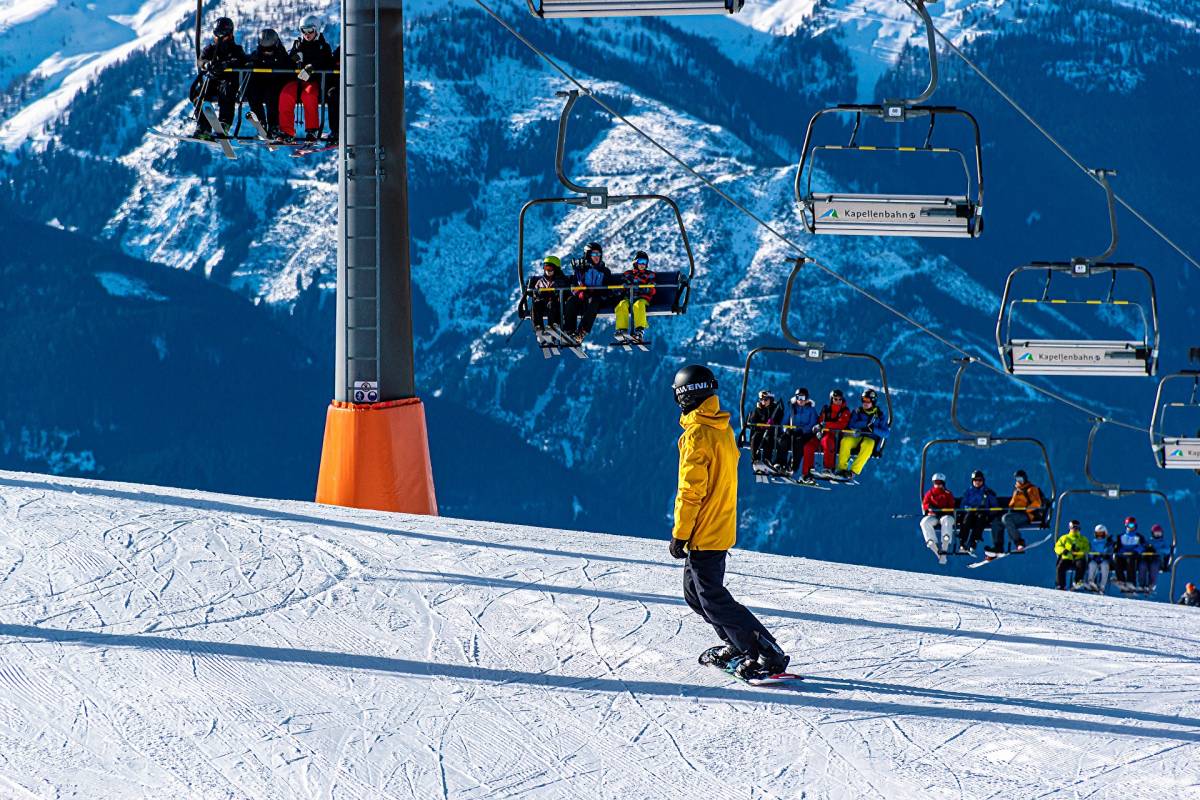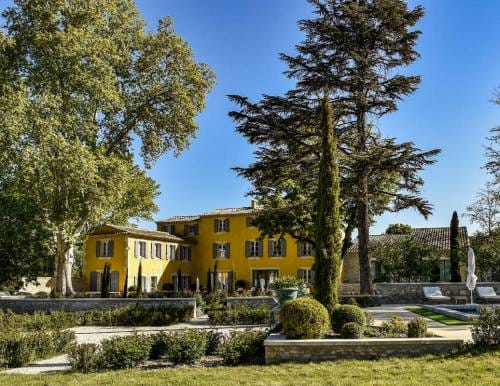An extraordinary strip of land in between Italy and France has remained almost unchanged for millions of years, nestled by a rocky wall of Upper-Jurassic dolomitic limestone about 100 metres high overlooking a mirror-of-emerald strip of the Mediterranean, in the proximity of Italy. This site called Balzi Rossi is also in the vicinity of Monaco and is named after the ochre colour of its cliffs. It is one of the most famous Palaeolithic sites in Europe, representing a relevant ‘monument’ of human history for experts on prehistory. This place was first mentioned by the naturalist Horace-Bénédict de Saussure at the end of the eighteen century. It took on great importance, starting from the first half of the nineteenth century on the impulse of the Grimaldi Family whose territory extended as far as Menton until 1848. A treasure of knowledge, made of twelve sites, it has been preserved for us despite some damage caused by the new railway line construction and Second World War bombing.

© Museo Preistorico dei Balzi Rossi
The Grimaldis incented research and discovery within Balzi Rossi
Florestan I, Prince of Monaco, first boosted some investigations in situ in 1846 and, since then, an extraordinary series of archaeological remains have been brought to light dating from Lower and Upper Palaeolithic with some evidence of Middle Paleolithic Mousterian tools. Burials, stone carvings, lithic collections, parietal engravings and many other tools such as blades, scrapers and arrowheads have survived unscathed until nowadays, witnessing the succession of human settlements. In 1858, François Forel, president of the Historical Society of Western Switzerland, started excavations on a scientific basis in the ‘Grande Barma’ Cave and in Caviglione’s Cave. Since 1892, Prince Albert I of Monaco continued to finance scientific explorations of seven areas considered of great interest. Not surprisingly, the largest spot on the east side, the Prince’s Cave (former Roman Bridge’s Cave) entered the property of the Prince’s Palace. Those findings, covering a period of 200,000 years, are currently on display at the Musée d’Anthropology Préhistorique de Monaco (Museum of Prehistoric Anthropology of Monaco). Another relevant collection of findings is shown in the Balzi Rossi Prehistoric Museum, belonging to the Italian Superintendence of Cultural Heritage, made of two buildings renewed in 1994 and re-inaugurated, most recently, in 2018 in the presence of H.S.H. Prince Albert II of Monaco.
But Balzi Rossi, a true snapshot of remote times unveiled by a series of international highly qualified research studies, is even more than just a prehistoric site. It provides also important geological information and clues about the evolution of fauna such as: some tropical animals, once indigenous, like the Merck’s rhinoceros, hippopotamus and some remains of a straight-tusked elephant which are showcased at the Balzi Rossi Museum.
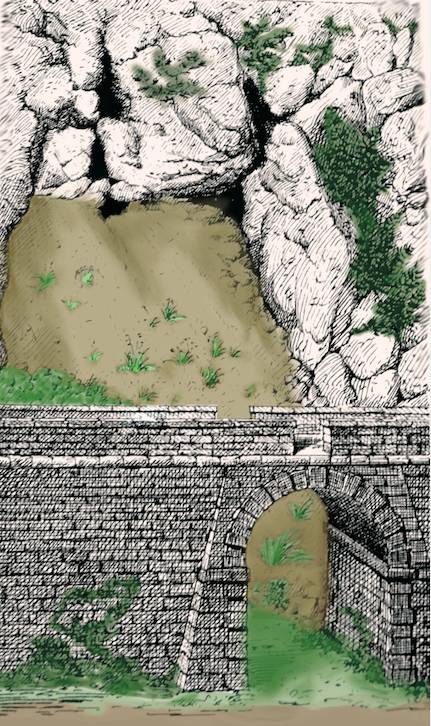
© Musée d’Anthropologie Préhistorique de Monaco / O. Notter
Top attractions from the Caves: Grimaldi Man and further impressive evidence
The valuable research work strongly desired by the Grimaldis allowed us to discover the pioneers of modern humankind. Balzi Rossi is one of the few locations of Cro-Magnon, an ancestral hominid of Homo Sapiens, widely settled in Europe, Russia, Asia, North Africa and North America in the Upper Palaeolithic period. Since 1872, Émile Rivière, expert in pre-history and doctor, had made a series of sensational discoveries. The ‘Lady of Caviglione’, originally called ‘The Man of Menton’, identifies what is left of a woman of high stature in an unusual pose, wearing a headgear of shells and deer teeth. The skeletons of a couple of children were then found in the homonymous grotto, laying on their backs and adorned with some marine shells. In 1892, finally, the local entrepreneur Giuseppe Abbo, while excavating several metres below the original level of the Great ‘Barma’, found the most amazing Triple Burial, currently on display at Balzi Rossi Prehistoric Museum. It is, in fact, a rare example of a communal tomb, dating back 25,000 years, made of three skeletons, an adult and two teenagers laying besides a rich funeral kit including seashells, blades of flint and deer teeth. Detailed DNA studies revealed they all belong to the same family.
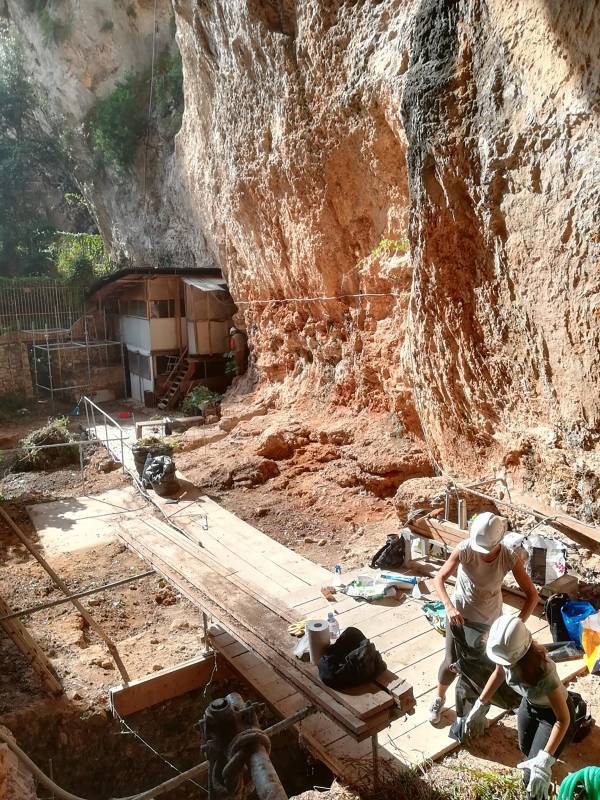
© Musée d’Anthropologie Préhistorique de Monaco
However, in Balzi Rossi, wonder never ends. In 1901, Léonce de Villeneuve unearthed in the Child Cave an old woman and a teenager curled up side by side with some specific physiognomic features unusual within Cro-Magnon. Thus, they became internationally known as the ‘Grimaldi Man’, dating back to 22,000–26,000 years ago. In spite of their distinctive face elements that originally recalled those of the natives of Africa, on closer examinations, they were definitely included in the Cro-Magnon category. More recent finds in the Prince’s Cave, carried out in between the 1960’s–1970’s by Louis Barral and Suzanne Simone, have unveiled engraved stones and animal waste, attributed to Neanderthal Man, and to even older human traces.

© Musée d’Anthropologie Préhistorique de Monaco
A further testimony of exceptional importance is the Engraving of the Horse in Caviglione’s Cave, an integral part of the current route of the visit. You will need a sharp eye to detect on the rock a series of zoomorphic linear incisions depicting the shape of a powerful animal body and a donkey-like muzzle. Found in 1971, it represents one of the rare examples of Palaeolithic art in Italy.

© Museo Preistorico dei Balzi Rossi

© Museo Preistorico dei Balzi Rossi
Another distinguished discovery at Balzi Rossi consists of a series of female statuettes of around 5 cm high, the so-called Venuses. These prehistoric artefacts, preserved partly on site, partly in Monaco and partly at the Museum of National Antiquities in Paris, have been considered as symbols of motherhood and fertility. What is amazing about these figurines is that similar ones were found in different parts across Europe. Undoubtedly, the statuettes of ‘fat ladies’ unearthed at Balzi Rossi have features in common with all the others, thus this artistic production is representing one of the signatures connecting populations from the Russian plains to the Atlantic and Mediterranean Sea shores.
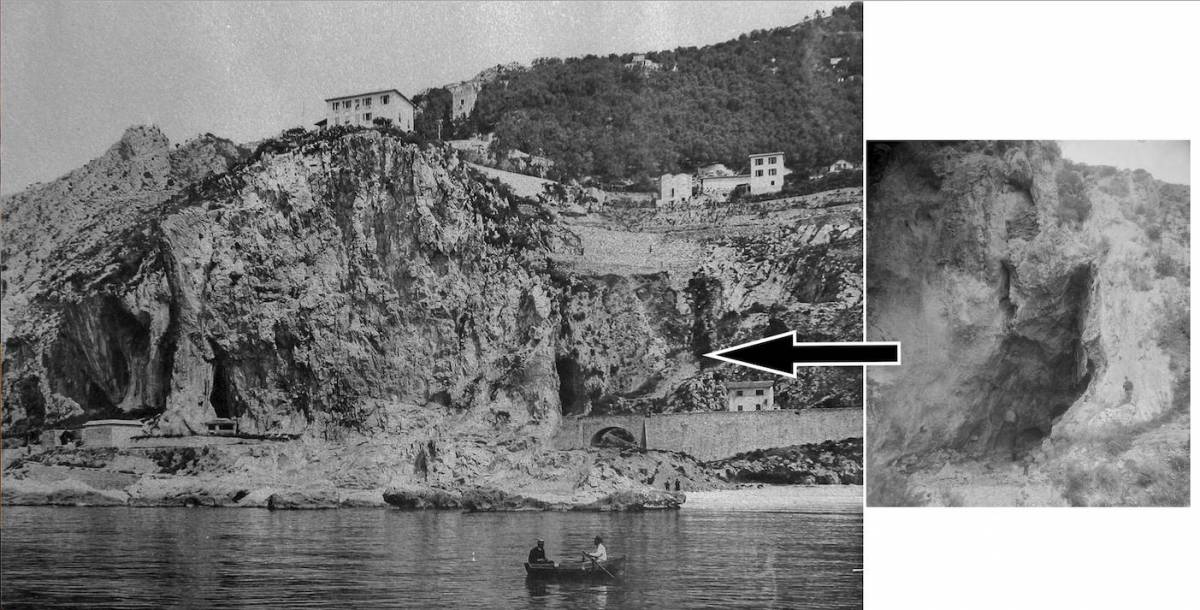
© Musée d’Anthropologie Préhistorique de Monaco / O. Notter
Interview with Antonella Traverso (A.T.), Director of the Prehistoric Museum of the ‘Balzi Rossi’ and Archaeological Zone.

© Museo Preistorico dei Balzi Rossi
HelloMonaco: What makes the visit to the Museum and the Archaeological Site a unique experience?
A.T.: The Balzi Rossi Museum collects findings from the research which had been conducted over two centuries on the stages of ancient life of prehistoric men. Thanks to their stratigraphy, the caves allowed the breaking of new ground and answering some important questions about ‘Stone Age Man’. The archaeological research showed that since the Upper Palaeolithic period they had been used as a sepulchre. Excavations uncovered sixteen figures, laid individually or in multiple graves, from 11,000 to 25,000 years ago. Many of these skeletons are currently distributed in various European museums.
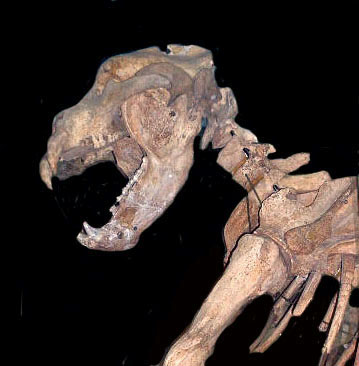
© Musée d’Anthropologie Préhistorique de Monaco
HelloMonaco: Have you been planning new archaeological excavations in the area of the caves?
A.T.: At the moment, there is no research sponsored by the Museum but every year two Italian universities carry on temporary studies in a couple of shelters: Bombrini (University of Genoa) and Mochi (University of Trento). Both teams are investigating the oldest levels of the Upper Palaeolithic period in particular the so-called Aurignacian layers, when Homo Sapiens arrived in Europe.

© Museo Preistorico dei Balzi Rossi
HelloMonaco: What are the plans for the future?
A.T.: We expect to complete the reinstallation of the ‘Old Museum’ financed by Sir Thomas Hanbury in 1898. Particularly, a new exhibition area dedicated to Palaeolithic art will constitute a special section where one can enjoy some findings from the excavations conducted in the twentieth century inside the Prince’s Cave, including a fragment of a woman’s iliac bone.
Interview with Elena Rossoni-Notter (E.R.-N.), Director of the Museum of Prehistoric Anthropology in Monaco.
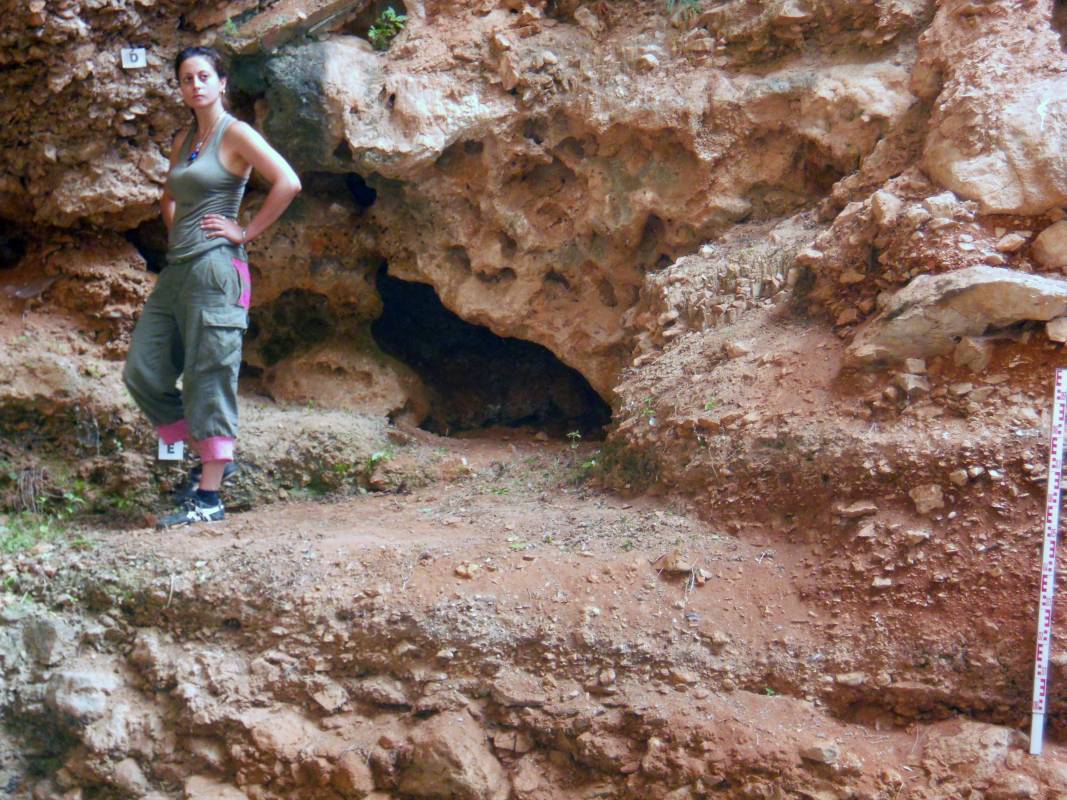
© Musée d’Anthropologie Préhistorique de Monaco
HelloMonaco: What do the Balzi Rossi sites represent in the study of Prehistory?
E.R.-N.: Balzi Rossi represents an exceptional complex of sites that provides important testimony on the lifestyles of prehistoric groups and the evolution of the paleo-environment. Monaco has always been intimately linked to these ‘Red Rocks’. The discoveries made at the time are still being studied and exhibited at the Museum of Prehistoric Anthropology in Monaco, notably the burials dated 25,000 years ago, tools cut by Palaeolithic hunter-gatherers or the remains of animals that had been eaten. Since my PhD thesis in 2011, further research, conferences on the results and publications have proliferated, with special regard to the Prince’s Cave for its assembled information and data-recording of climatic cycles. Therefore, the Museum team frequently visits the site and is preparing to resume more excavations very soon.

© Musée d’Anthropologie Préhistorique de Monaco
Useful information and links
Museo Preistorico dei Balzi Rossi e Zona Archeologica (Prehistoric Museum of Balzi Rossi and archaeological zone):
Official Website > www.musei.liguria.beniculturali.it/en
Tel: +39 0184 38113
Address: Via Balzi Rossi, 9 – 18039 Ventimiglia
Closed on Mondays
Musée d’Anthropologie Préhistorique de Monaco (Museum of Prehistoric Anthropology of Monaco):
Official website > https://map-mc.org/en
Tel: +377 98988006
Address: 56 bis, Boulevard du Jardin Exotique – 98000 Monaco
The museum is open all year except November the 19th (National Day) and December the 25th.
Note: Due to Covid-19 health emergency please find out about regular opening times before any visit.





